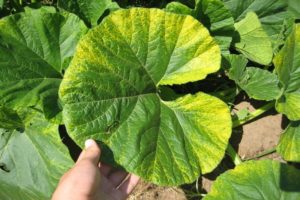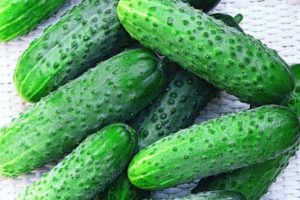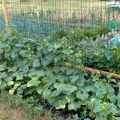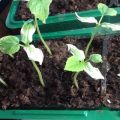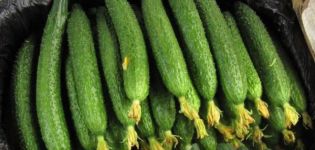Characteristics and description of the variety of cucumbers Competitor, planting, care and cultivation
Cucumber "Competitor" is a fairly old variety, known for its bee pollination and early maturity. This crop appeared in 1980 thanks to the Crimean breeders, especially in order to be grown in the southern parts of the country.
For the fourth decade, this variety has been presented on the seed market. According to many years of experience in varietal cultivation, the variety develops well in the non-chernozem regions of Russia.
Characterizing the "Competitor"
The description of the variety is initiated from its basic feature - early maturity. If you plant seeds in the spring, in the last days of May, then between the emergence of seedlings and the ripening of cucumbers will take about 50 days or a little less, and if already in summer in June - about a month.
Planting vegetables quickly is not recommended: cucumbers love warmth. It is interesting that at first the growth of the roots exceeds the growth of the ground part of the cucumbers by 3 times, but after 50 days they become close in size, then the outer part of the plant goes into active growth, and the roots develop to the required size and do not grow any more.
The stem part of the culture develops rapidly, forms tendrils, with the help of which you can catch on to any support. As for the leaves, the "Competitor" has a heart-shaped structure. After a short period of time after germination, flowers appear.
The cultivated vegetable has male and female genitals available. The latter are capable of forming ovaries. Corolla is yellow in color. As for the flower disclosure, in the southern regions it starts already at 4 am, and in the north - two hours later. The viability of pollen lasts only a couple of hours after flower opening. The bees pollinate the vegetables, and after 12 days the plant finishes blooming, starting fruiting. And by the fiftieth day after the seed sowing, the first fruits ripen.
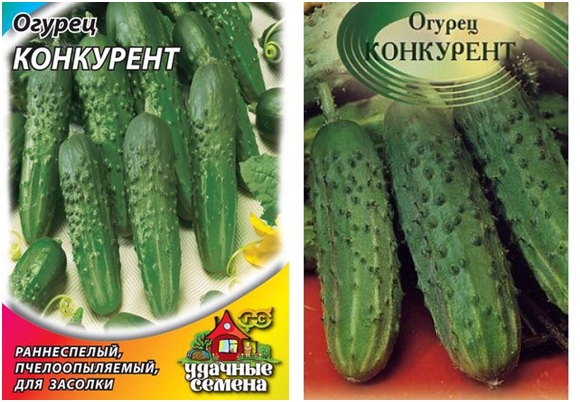
An important characteristic of “Competitor” cucumbers is a rather high yield. For every square meter, there are 3-4 kilograms of fruit. Such data are associated with the duration of the fruiting time - on average, the variety assumes about three months of fruit collection. Again, much is at the mercy of the weather and temperature extremes, due to which the period of fruit formation and the yield itself go down.
About the features of the fruits of the described cucumbers
Let's give the following description for vegetables:
- They are oval-cylindrical in shape, with large tubercles and the presence of black spines.
- In color - an intense dark green shade with light stripes.
- The pulp is juicy and sweetish.
- The largest is from 9 to 15 cm.
- By weight - 100-125 grams.
- The yield is 3-4 kilograms per square meter.
When it comes to yield, it is clear that it is related to climatic characteristics, variations in weather and type of cultivation. Growing on trellises, for example, gives growers more fruitful returns than the traditional development of plants in the usual beds.
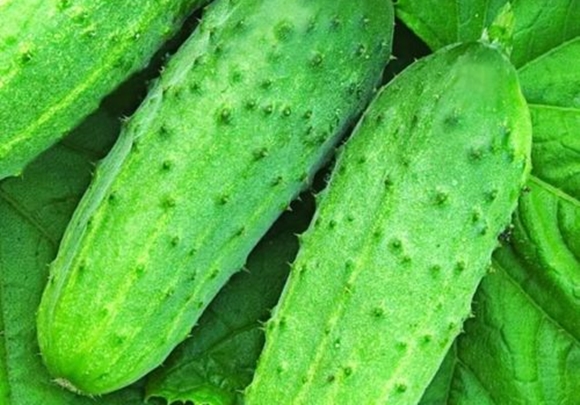
Features of seed planting culture
Planting and caring for a crop begins with preparatory actions with the seeds. First of all, they need calibration - the separation of useless and small seeds. They are dipped in salt water in proportions - 30 grams of salt per liter of water. This liquid assumes the complete dissolution of the salt crystals, and then the cucumber seed is immersed in water for ten minutes, until the seeds begin to separate themselves. Floated seeds are not suitable for planting, so they should be removed with a spoon. And those that remained at the bottom are optimal for growing in the open field.
Next, it is necessary to carry out seed washing, followed by disinfection. A weak solution of potassium permanganate or boric acid will help in this. The seeds are placed in the solution for about a day. If cucumber seeds last longer, then there will be more flowers with female cells.
In general, the seeds do not lose their properties and are suitable for growing for six years.
And so, we can say that the sowing can take place. In the absence of intentions for further germination of seeds, they should simply be dried and planted. You can also grow seeds before planting, then there will be complete confidence in the result: everything that germinates will end up in the ground. And although the calibration process is effective, it will not give a 100% guarantee for determining the quality of seeds.
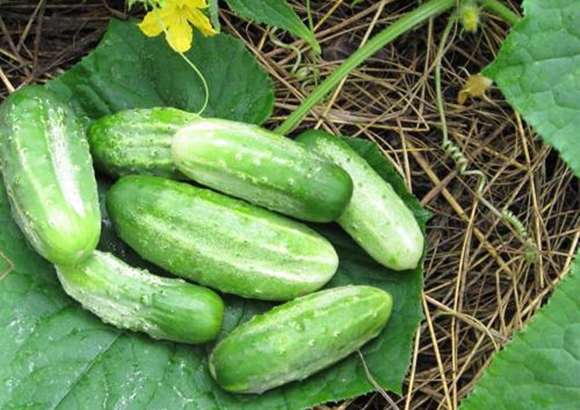
Growing the "Competitor" correctly
It is possible to grow the “Competitor” cucumber crop both in soil and in greenhouse conditions. For the Russian central strip, these cucumbers are recommended to be planted under film coatings. The optimum temperature for cucumber seedlings is 20 ° -25 ° C.
Let's not forget also about moderate soil moisture: the soil should not be very wet, but not dry either, then the sprouts can be expected for 4-5 days. Warming up the seedlings is not required: a high temperature level can slow down their development, and long-term heat can lead to death, therefore, at temperatures above + 35 ° C, vegetables should be shaded.
It is preferable to plant seeds at a distance of forty centimeters from each other, and at the same distance between the cucumber rows. It is recommended to place cucumbers in beds where onions, potatoes and tomatoes were the predecessors. Fruiting is best carried out on trellises, and corn crops are well suited as a support.
Care features
In order for the “Competitor” cucumbers to grow well and bear fruit, you must follow the rules of caring for them: regularly weed the beds, water abundantly and in a timely manner, slightly loosen the soil around the cucumbers and fertilizers. According to the description of Competitor cucumbers, caring for them does not cause any difficulties, it is only important to be aware of certain biological characteristics of plants:
- The beds should be organized using light, medium and sandy loams, not forgetting the abundance of minerals and organic matter.
- The beds are prepared immediately after the harvest of the predecessor vegetables.
- Requires deep ridge digging and parallel application of organic fertilizers, among the favorites are manure and vermicompost in combination with potassium and phosphorus components.
- With the development of an active kind of vegetation, feeding is carried out when flowers appear and the budding process.
- As for the irrigation system, a modern drip irrigation system for cucumber crops is used.
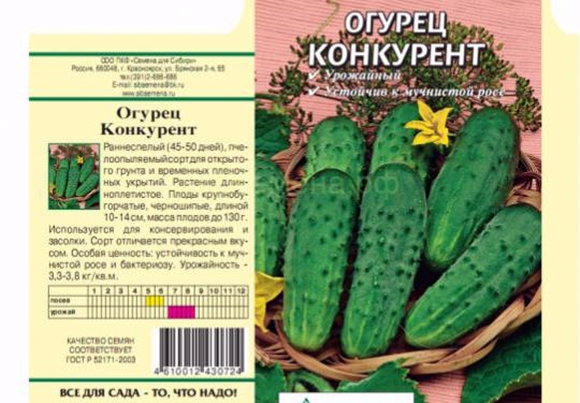
If, while growing cucumbers, you find the slightest signs of the occurrence of insects or diseases on vegetables, then immediately take preventive measures, where in each case, select certain chemicals. So, to prevent fungi and viruses, it is processed with products that contain copper, for example, its oxychloride or Bordeaux liquid.
The procedure is carried out in the event of cucumber diseases and when a couple of leaves appear on the sprouts. Such processing is performed in the morning or in the evening to avoid the appearance of burns on the leaves.
On the virtues of culture
The description of the “Competitor” variety shows an example of a cucumber culture, practically devoid of flaws. And the advantages, on the contrary, are a large number, which include:
- Decent harvests;
- Great appearance and excellent taste;
- Good pollination;
- High seed germination, as well as almost maximum seedling survival rate;
- Resistance of culture to powdery mildew;
- Long-term fruiting;
- According to the climate and weather, you can get 3.3-3.8 kilograms from each square meter of planting.
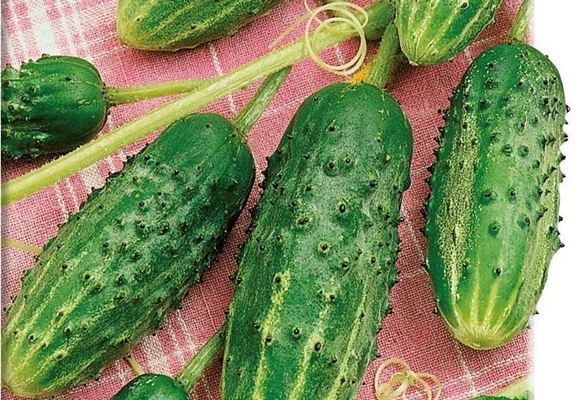
Some reviews of gardeners note such negative manifestations of the variety as yellow fruit, if the crop is harvested out of time. Overgrown cucumbers have thick, cracked skin, devoid of the classic scent. And if it is not enough to water, then the flesh of the cucumbers can give off a bitter taste.
The described variety is rightfully popular among gardeners. He, according to the majority, is unpretentious and disease-resistant. Even novice gardeners will be able to plant, grow and give the necessary care to these cucumbers. The fruits are smooth, neat looking, they are good for making pickles. And for a better assessment of the taste of the "Competitor" cucumbers, there is only one thing left - to make them the culture of your garden.
